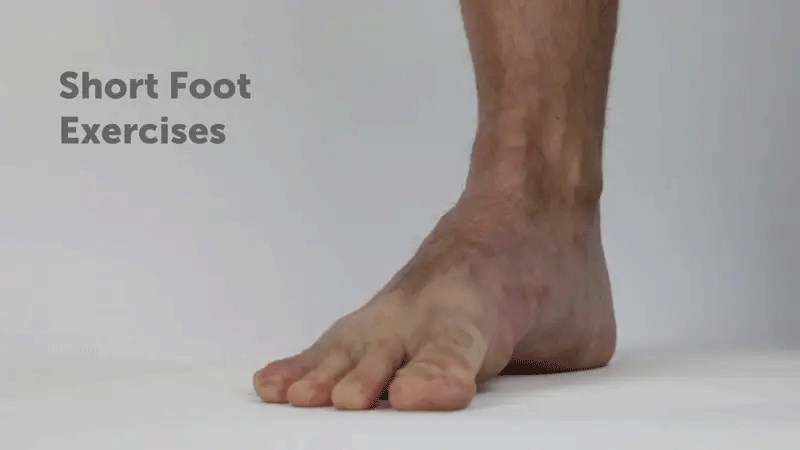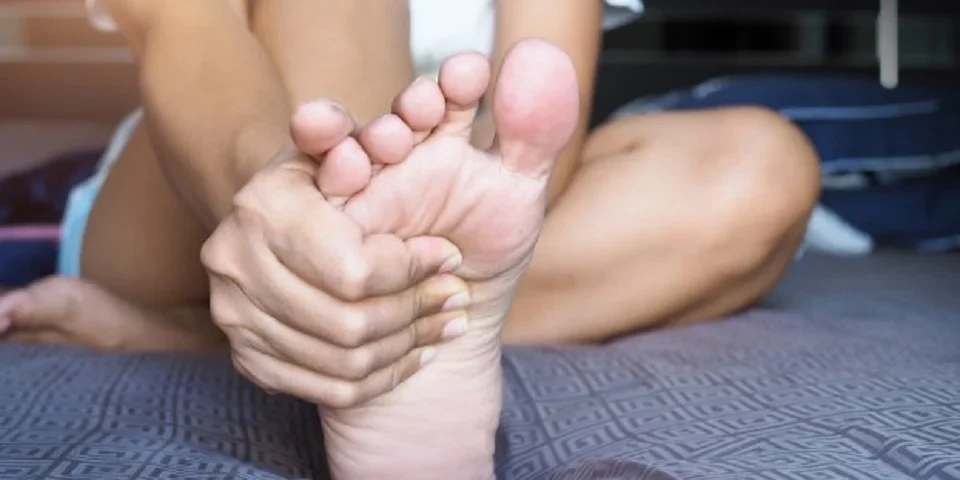Let’s chat about that pesky plantar fasciitis that seems to creep up on the best of us out of no where. For me, plantar fasciitis first hit me in the left foot after waking up in the morning. It took over a week to fully relieve the foot pain. After talking with others who’ve gone through the plantar fasciitis pain before, and some online research, I’ve come up with the following 7 exercises that helped me and others with plantar fasciitis pain relief. I hope these effective exercises can help you kick that faciitis pain to the curb.
1. Plantar Fascia Stretch
Instructions:
- Sit down and cross your foot over your opposite leg.
- Grab your foot and give those toes a good pull towards your shin. Feel that? That’s your plantar fascia saying “thank you!”
- Hold that stretch for 30 seconds and repeat 3 times.
Why do it?
This exercise stretches the plantar fascia, relieving pain and decreasing tension in the foot. It’s like a mini spa day for your foot!
Pro tip: Do this stretch first thing in the morning before you even step out of bed and after long periods of inactivity. It’ll make those first steps a lot less uncomfortable.

.
2. Calf Stretch with Straight Knee
Instructions:
- Stand facing a wall or a chair.
- Step backward with the working leg, bending your front leg.
- Make sure your back leg is straight and your heels stay on the ground.
- Lean forward to feel a stretch in the Gastrocnemius muscle of the back leg.
- Hold the stretch for 30 seconds and repeat 3 times.
Why do it?
This exercise stretches the longer calf muscle, the Gastrocnemius. Tight calf muscles can contribute to plantar fasciitis by increasing tension around the foot and by putting extra load on the plantar fascia. By performing the stretch regularly, you can relieve this tension, decreasing the load that’s placed on the plantar fascia and relieving pain.
Pro tip: Do these stretches at the beginning of the day and regularly throughout the day for the best results. Try a slant board for calf stretching or squat wedge to help target various angles to achieve a deep targeted calf stretch. Professional slant boards for calf stretching are among the main go-to exercises equipment for stretching the calf to alleviate calf cramps, prevent future injuries, and treat plant fasciitis pain relief.
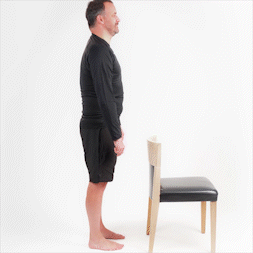
3. Calf Stretch with Bent Knee
Instructions:
- Stand facing a wall or a chair.
- Take a half step backward with the working leg.
- Lower your body over your back leg. Make sure your heels stay on the ground.
- Drive the knee of the back leg forward to feel a stretch in the Soleus muscle of the back leg.
- Hold the stretch for 30 seconds and repeat 3 times.
Why do it?
This exercise stretches the deep calf muscle, the Soleus. Tight calf muscles can contribute to plantar fasciitis by increasing tension around the foot and by putting extra load on the plantar fascia. A slant board for deep calf stretches can help target those tight calf muscles and support prevention of plantar fasciitis. By performing the calf stretches regularly, you can relieve this tension, decreasing the load that’s placed on the plantar fascia and relieving pain.
Pro tip: Many people overlook the bent knee calf stretch because it appears similar to the straight knee version. However, bending the knee shifts the focus of the stretch from the Gastrocnemius muscle to the deeper Soleus muscle. An adjustable incline board of adjustable slant board is common among physical therapists to help patients target the calf, but also varying angles to accommodate beginners to advanced levels of deep calf stretches. This makes it important to perform both straight knee and bent knee calf stretches, as they target different muscles.
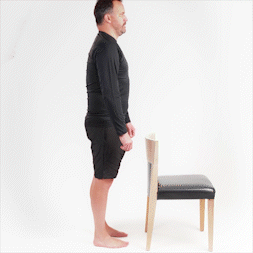
4. Slant Board Squats
Instructions:
- Stand on a squat wedge or incline board like a wooden slant board with your feet hip-width apart.
- Lower your body into a squat, keeping your heels on the ground.
- Rise back up to standing.
- Repeat this 10 times.
Why do it?
This exercise using a slant board for calf stretching strengthens your calves and ankles, which can help alleviate plantar fasciitis pain. It also helps improve your flexibility, balance and mobility, which all contributes to preventative measures to reduce injuries and enhance your day-to-day activities without risk of injury.
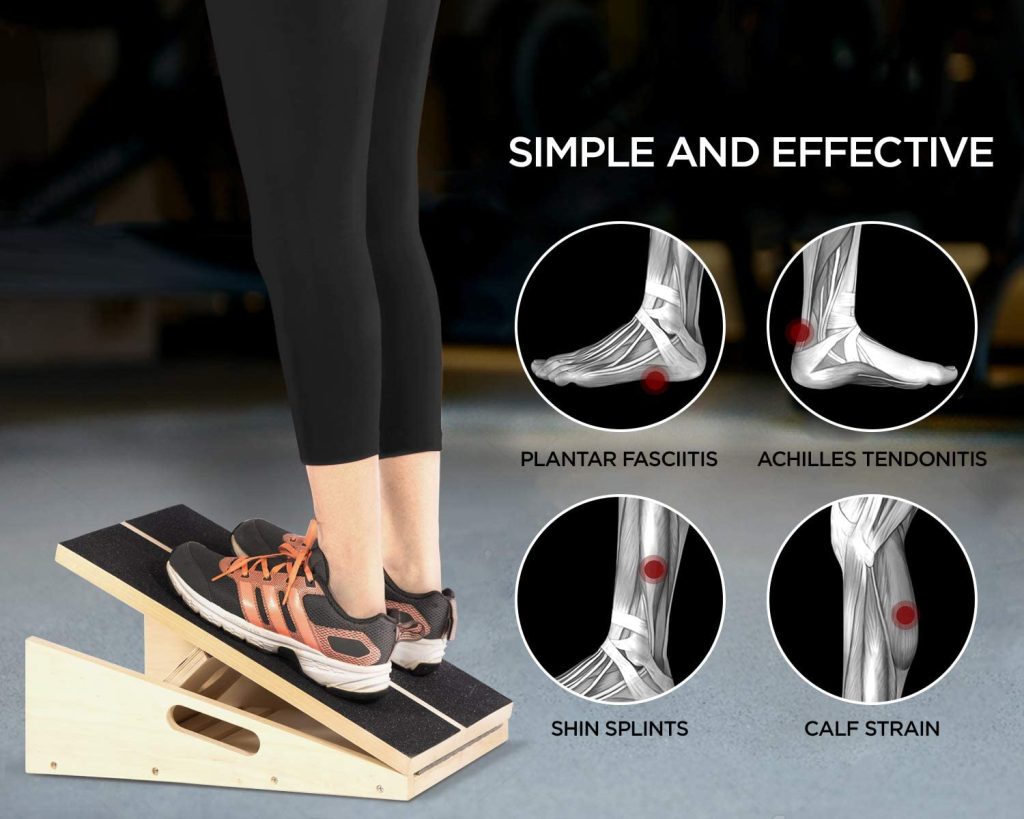
5. Plantar Fascia Release
Instructions:
- Sit or stand and roll the bottom of the affected foot firmly with a massage ball.
- Be gentle around sensitive points and don’t roll into pain.
- Roll for up to 5 minutes.
Why do it?
This exercise releases tension in the plantar fascia, providing pain relief. This is among my favourite exercises to do to relieve the pain. Its simple, effective and quick.
Pro tip: Do the massage ball to release the fasciitis pain first thing in the morning before you even step out of bed and after long periods of inactivity. It’ll make those first steps a lot less painful. Be careful around sensitive points and decrease the pressure if you feel too much pain.
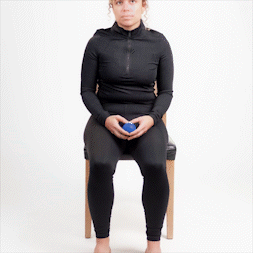
6. Calf Release with Massage Ball
Instructions:
- Sit on the ground and place a massage ball under the calf of the affected foot.
- Slowly press your weight into the ball and apply pressure.
- Hold for up to 60 seconds at each point.
- Take a deep breath and try to relax, feeling the tension in the calf muscle decreasing.
- Repeat at the upper, middle, lower, inner, and outer parts of the calf muscle.
Why do it?
This exercise releases tension in the calf muscles, increases ankle mobility, and relieves pain. Tight calf muscles can contribute to plantar fasciitis by increasing tension around the foot and by putting extra load on the plantar fascia.
Pro tip: Focus on your breath, try to relax the muscle as you feel the tension in the point decreasing.
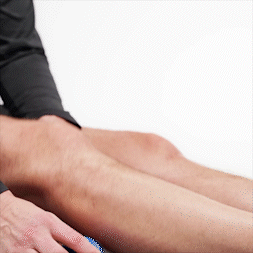
7. Heel Raises
Instructions:
- Perform the heel raises on a step or slant board with a single leg at a time.
- Roll up a towel, put it on the step, and place your toes over it.
- With a straight knee, raise your heel up so you’re standing on your toes.
- Hold the top position for 3 seconds before lowering your heel back in a controlled movement.
- Complete 8-12 repetitions and repeat 3 times.
Why do it?
This exercise strengthens the calf muscles and stretches the plantar fascia. This increases the capacity of the plantar fascia, making it more resistant to pain.
Pro tip: It’s important to focus on controlling the movement the whole time. You can perform the heel raises on any step, stair, or slant board. You can hold onto something for balance. It can be good to gradually increase the difficulty of the heel raises. For example, most adjustable professional slant boards have 5 or 6 adjustable angles. You can use the following progression:
- On the ground with both legs at the same time
- On the ground with a single leg at a time
- On a step with a single leg at a time
- On a step with a single leg at a time, add weight with a backpack.
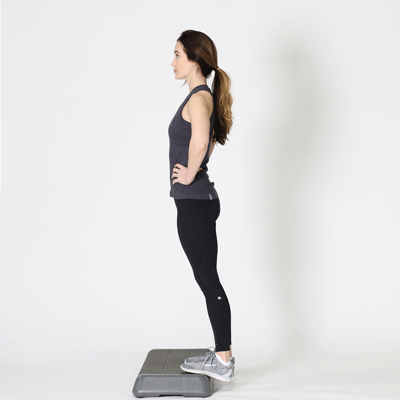
8. Short Foot (bonus)
Instructions:
- In a sitting position, pull the ball of your foot back to the heel while keeping them in contact with the ground.
- Hold for 5 seconds and release, repeat 10 times.
- Focus on controlling the movement and feeling the intrinsic foot muscles working.
Why do it?
This exercise strengthens the intrinsic muscles of the feet, decreasing load on the plantar fascia. Strengthening these muscles can relieve pain and improve overall foot health.
Pro tip: Some people find it challenging to perform the short foot exercise, and may not feel the intrinsic foot muscles working at first. This is because these muscles are often underused and need to be activated through targeted exercises. While it may take some practice to get the technique down, it’s worth the effort to strengthen these muscles.
And there you have it! Seven effective and fun exercises I’ve used for plantar fasciitis relief and to help say “bye-bye” to the plantar fasciitis pain. Remember, consistency is key, so keep at it, and you’ll be strutting your stuff pain-free in no time!
